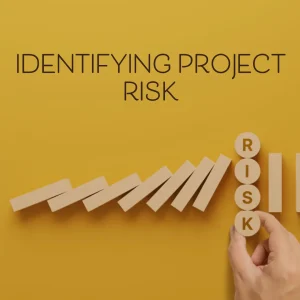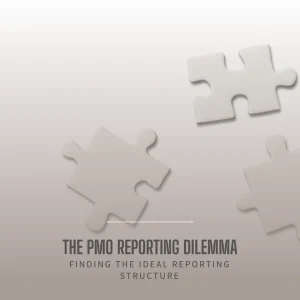Introduction to Project Portfolio Management (PPM)
Project Portfolio Management (PPM) is a critical discipline within project management that focuses on the centralized management of multiple projects to achieve strategic objectives. It involves the selection, prioritization, and management of projects in a way that aligns with an organization’s overall goals. The primary objectives of PPM include:
- Maximizing Value: PPM aims to ensure that the projects undertaken deliver the highest possible value to the organization. This involves assessing the potential return on investment and aligning projects with strategic priorities to optimize resource allocation and minimize waste [11].
- Risk Management: By managing a portfolio of projects, organizations can better understand and mitigate risks. PPM provides a framework for evaluating the cumulative impact of projects, allowing for informed decision-making regarding resource distribution and project viability [13].
- Resource Optimization: Effective PPM helps organizations allocate resources efficiently across various projects, ensuring that time, budget, and skills are utilized optimally. This structured approach reduces the likelihood of resource conflicts and enhances overall project performance [11][15].
The role of PPM in aligning projects with organizational strategy cannot be overstated. It serves as a bridge between project execution and strategic planning, ensuring that every project contributes to the broader objectives of the organization. By continuously assessing project alignment with strategic goals, PPM enables organizations to make informed decisions about which projects to pursue, adjust, or terminate based on their relevance and potential impact [9][13].
Managing multiple projects simultaneously introduces significant complexity. Each project may have its own set of objectives, timelines, and resource requirements, which can lead to challenges in coordination and execution. A structured approach to PPM is essential for navigating this complexity. It provides a framework for prioritizing projects, managing interdependencies, and ensuring that all projects are aligned with the organization’s strategic vision. This structured methodology not only enhances project outcomes but also facilitates smoother transitions during periods of change, making it an invaluable tool for change managers and project managers alike [6][15].
Understanding Change Management
Change management is a structured approach that guides individuals, teams, and organizations through the transition from a current state to a desired future state. It encompasses a variety of processes, tools, and techniques aimed at managing the people side of change to achieve a required business outcome. The key components of change management include:
- Communication: Effective communication is essential to inform stakeholders about the change, its purpose, and its impact. This helps in reducing resistance and fostering acceptance.
- Engagement: Involving stakeholders in the change process ensures their buy-in and support, which is crucial for successful implementation.
- Training and Support: Providing the necessary training and resources helps individuals adapt to new processes or systems, thereby minimizing disruption.
- Monitoring and Feedback: Continuous assessment of the change process allows for adjustments based on feedback, ensuring that the change is on track and meeting its objectives.
The impact of change on projects and portfolios can be significant. As organizations strive to adapt to evolving market conditions, technological advancements, and internal dynamics, the frequency and scale of changes increase. This can lead to:
- Disruption of Project Timelines: Changes can alter project scopes, timelines, and resource allocations, potentially leading to delays and increased costs.
- Resource Reallocation: Projects may require a shift in resources to accommodate new priorities, which can strain existing project teams and affect overall productivity.
- Stakeholder Resistance: Unmanaged change can lead to resistance from team members and stakeholders, undermining project objectives and outcomes.
The relationship between change management and project success is critical. Effective change management practices can enhance project outcomes by:
- Aligning Projects with Strategic Goals: By integrating change management into project portfolio management (PPM), organizations can ensure that projects are aligned with broader strategic objectives, maximizing their value.
- Improving Stakeholder Satisfaction: When change is managed well, stakeholders are more likely to feel informed and engaged, leading to higher satisfaction levels and support for project initiatives.
- Enhancing Adaptability: Organizations that embrace change management are better equipped to respond to unforeseen challenges, allowing for smoother transitions and more resilient project portfolios.
Incorporating change management into project portfolio management not only facilitates smoother transitions but also drives better overall project performance, ensuring that organizations can navigate the complexities of change effectively. By understanding and applying change management principles, project managers and change managers can work together to achieve successful project outcomes and foster a culture of continuous improvement.
The Need for Integrating Change Management into PPM
The integration of change management practices is not just beneficial; it is essential for achieving successful project outcomes. The complexities of managing multiple projects simultaneously can lead to significant challenges, particularly when change is not effectively managed. Here are some key points to consider regarding the necessity of this integration:
Challenges Faced in PPM Without Change Management
- Increased Resistance to Change: Projects often encounter resistance from stakeholders who are unprepared for the changes being implemented. Without a structured change management approach, this resistance can hinder project progress and lead to project failure [1].
- Misalignment of Objectives: When change management is not integrated into PPM, there is a risk that project objectives may not align with organizational goals. This misalignment can result in wasted resources and efforts that do not contribute to the strategic vision of the organization [2].
- Poor Communication: Effective communication is a cornerstone of both change management and PPM. Without a change management framework, communication can become fragmented, leading to misunderstandings and a lack of clarity among team members and stakeholders [3].
Improved Outcomes Through Integration
- Case Studies and Statistics: Organizations that have successfully integrated change management into their PPM practices report significantly better outcomes. For instance, a study found that projects with robust change management practices are 6 times more likely to meet their objectives compared to those without [4]. Additionally, companies that prioritize change management see a 30% increase in project success rates, demonstrating the tangible benefits of this integration [5].
- Enhanced Stakeholder Engagement: By incorporating change management strategies, project managers can foster greater stakeholder engagement. This engagement not only helps in gaining buy-in for projects but also ensures that stakeholders are informed and involved throughout the project lifecycle, leading to smoother transitions and better project outcomes [6].
Risks of Neglecting Change Management in PPM
- Increased Project Failure Rates: Neglecting change management can lead to higher project failure rates. Research indicates that projects lacking a change management strategy are 70% more likely to fail, primarily due to inadequate stakeholder support and poor communication [7].
- Resource Wastage: Without effective change management, organizations may find themselves reallocating resources to address issues that arise from poorly managed transitions. This can lead to capacity bottlenecks and inefficiencies, ultimately impacting the overall performance of the project portfolio [8].
- Long-term Strategic Misalignment: Failing to integrate change management into PPM can result in long-term strategic misalignment. Projects may deviate from the organization’s strategic goals, leading to a cumulative effect that undermines the organization’s ability to adapt and thrive in a changing environment [9].
Strategies for Effective Change Management in PPM
Integrating change management practices into Project Portfolio Management (PPM) is essential for ensuring that organizations can navigate transitions smoothly and achieve their strategic objectives. Here are actionable strategies that change managers and project managers can implement to enhance their PPM processes through effective change management:
- Develop a Change Management Framework Aligned with PPM Processes: Establishing a structured change management framework is crucial. This framework should be designed to complement existing PPM processes, ensuring that changes are systematically assessed, planned, and executed. By aligning change management with PPM, organizations can better manage the cumulative impact of changes across the portfolio, leading to improved project outcomes and strategic alignment [4][13].
- Incorporate Stakeholder Engagement and Communication Plans: Engaging stakeholders is a vital component of successful change management. Identify all stakeholders affected by the changes and develop comprehensive communication plans that keep them informed and involved throughout the process. Soliciting input and feedback from stakeholders not only fosters a sense of ownership but also helps in identifying potential resistance early on, allowing for proactive management of concerns [6][8]. Effective communication ensures that everyone is on the same page, which is essential for smooth transitions.
- Utilize Tools and Software that Support Both PPM and Change Management: Leveraging technology can significantly enhance the integration of change management into PPM. Utilize tools and software that facilitate project tracking, stakeholder communication, and change impact analysis. These tools can help streamline processes, improve visibility into project statuses, and ensure that change initiatives are effectively monitored and managed [4][13]. By employing the right technology, organizations can optimize their change management efforts and enhance overall project performance.
By implementing these strategies, change managers and project managers can create a more resilient and adaptable project portfolio, ultimately leading to better outcomes and a stronger alignment with organizational goals. Integrating change management into PPM not only enhances project success rates but also fosters a culture of continuous improvement and agility within the organization [3][13].
Best Practices for Change Management in Project Portfolio Management
Integrating effective change management practices into Project Portfolio Management (PPM) is essential for achieving better outcomes and ensuring smooth transitions. Here are some best practices that can enhance the effectiveness of change management within PPM:
- Conduct Regular Assessments and Reviews: It is crucial to perform ongoing evaluations of the changes within the project portfolio. This involves assessing the impact of changes on project objectives and organizational goals. Regular reviews help identify potential risks and areas for improvement, allowing for timely adjustments to be made. This proactive approach ensures that the portfolio remains aligned with strategic initiatives and can adapt to evolving circumstances [2][11].
- Foster a Culture of Adaptability and Resilience: Building a culture that embraces change is vital for project teams. Encouraging adaptability and resilience among team members can significantly enhance their ability to manage transitions effectively. This can be achieved through open communication, training, and support systems that empower teams to respond positively to change. A resilient culture not only improves morale but also reduces turnover and enhances overall project performance [1][3].
- Leverage Lessons Learned from Previous Projects: Utilizing insights gained from past projects is a powerful strategy for informing current change management practices. By analyzing what worked well and what did not, project managers can develop more effective change strategies. Documenting lessons learned and sharing them across teams fosters a continuous improvement mindset, which is essential for refining change management processes and enhancing project outcomes [4][13].
Incorporating these best practices into PPM can lead to more successful project outcomes, as they align change management efforts with the overall strategic goals of the organization. By focusing on regular assessments, cultivating a supportive culture, and learning from past experiences, change managers and project managers can navigate the complexities of change more effectively, ultimately driving better results for their projects.
Case Studies: Successful Integration of Change Management in PPM
Integrating change management practices into Project Portfolio Management (PPM) is essential for achieving better project outcomes. This section presents real-world case studies from various industries that exemplify effective change management in PPM, analyzes the strategies employed, and draws valuable lessons for change managers and project managers.
Case Study Highlights
- Healthcare Sector: Transforming Patient Care
- Organization: A large hospital network.
- Strategy: The organization initiated a comprehensive change management program during the rollout of a new electronic health record (EHR) system. They engaged stakeholders early, soliciting feedback from medical staff and administrative personnel to tailor the system to their needs.
- Outcome: The early involvement of stakeholders led to a smoother transition, with a 30% reduction in training time and a 25% increase in user satisfaction post-implementation. This case illustrates the importance of stakeholder engagement in minimizing resistance to change and enhancing project success [3][13].
- Technology Industry: Agile Transformation
- Organization: A mid-sized software development firm.
- Strategy: The firm adopted Agile methodologies across its project portfolio. They implemented regular training sessions and workshops to equip teams with the necessary skills and foster a culture of adaptability. Change management was embedded into the project lifecycle, ensuring continuous feedback loops.
- Outcome: The integration of change management practices resulted in a 40% increase in project delivery speed and a significant improvement in team morale. This case demonstrates how embedding change management into the project lifecycle can lead to enhanced agility and responsiveness to market demands [2][13].
- Manufacturing Sector: Lean Implementation
- Organization: A global manufacturing company.
- Strategy: The company launched a Lean initiative aimed at reducing waste and improving efficiency across its project portfolio. Change management was prioritized by establishing a dedicated change management team that worked closely with project managers to align goals and expectations.
Analyzing Strategies and Their Impact
The case studies reveal several common strategies that contributed to successful integration of change management in PPM:
- Early Stakeholder Engagement: Involving stakeholders from the outset helps to identify potential challenges and fosters a sense of ownership, which is crucial for minimizing resistance to change [3][13].
- Continuous Training and Support: Providing ongoing training ensures that team members are equipped to handle new processes and technologies, leading to higher adoption rates and project success [2][13].
- Alignment with Strategic Goals: Integrating change management with the organization’s strategic objectives ensures that projects are not only successful in isolation but also contribute to broader organizational goals [1][11].
Lessons Learned
From these case studies, several key lessons can be drawn for change managers and project managers:
- Prioritize Change Management: Treat change management as a critical component of project planning and execution rather than an afterthought. Early integration can significantly enhance project outcomes [1][15].
- Foster a Culture of Adaptability: Encourage a culture that embraces change by providing the necessary tools and support for teams to adapt to new processes and technologies [2][13].
- Measure and Reinforce Success: Implement mechanisms to measure the effectiveness of change management initiatives and reinforce successful practices across the organization [15].
By learning from these successful case studies, change managers and project managers can better navigate the complexities of integrating change management into their project portfolios, ultimately leading to improved project outcomes and organizational resilience.
Conclusion: The Future of PPM with Change Management
Integrating change management practices into project portfolio management (PPM) is not just a trend; it is a necessity for organizations aiming to thrive in an ever-evolving business landscape. The synergy between these two disciplines can lead to significant improvements in project outcomes and overall organizational adaptability. Here are the key benefits of merging change management with PPM:
- Enhanced Adaptability: By incorporating change management, organizations can foster a culture of adaptability. This ensures that teams are better prepared to handle transitions, leading to smoother project execution and reduced resistance to change [11].
- Improved Stakeholder Engagement: Change management emphasizes communication and stakeholder involvement, which are crucial in PPM. Engaging stakeholders throughout the project lifecycle helps align expectations and increases buy-in, ultimately leading to more successful project outcomes [4][13].
- Increased Project Success Rates: Organizations that effectively integrate change management into their PPM practices often see higher success rates in their projects. This is due to a structured approach that addresses potential challenges and prepares teams for the changes ahead [3][11].
- Long-Term Value Creation: The benefits of a well-implemented change management process extend beyond individual projects. It creates a resilient organization capable of thriving in dynamic environments, ensuring sustained success over time [11].
As you reflect on these benefits, it is essential to assess your current PPM practices in relation to change management. Consider the following steps:
- Evaluate Current Practices: Take a close look at how your organization currently manages change within its project portfolios. Identify gaps where change management could enhance your processes.
- Engage Your Team: Involve your project teams and stakeholders in discussions about integrating change management into PPM. Their insights can provide valuable perspectives on potential improvements.
- Develop a Roadmap: Create a strategic plan that outlines how you will incorporate change management practices into your PPM framework. This roadmap should include specific actions, timelines, and responsible parties.
In conclusion, the future of project portfolio management lies in its ability to adapt and respond to change effectively. By integrating change management practices, organizations can not only improve project outcomes but also build a resilient culture that embraces change. Now is the time to take action and position your organization for success in the face of ongoing change.
Find out more about Shaun Stoltz https://www.shaunstoltz.com/about/
This post was written by an AI and reviewed/edited by a human.



